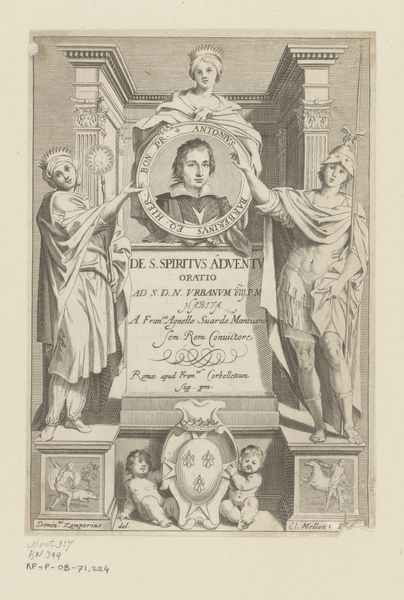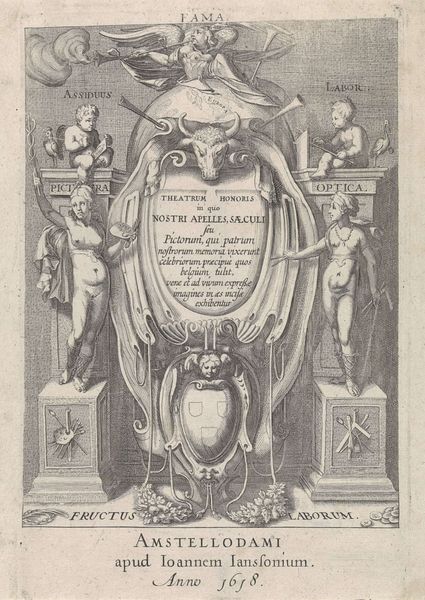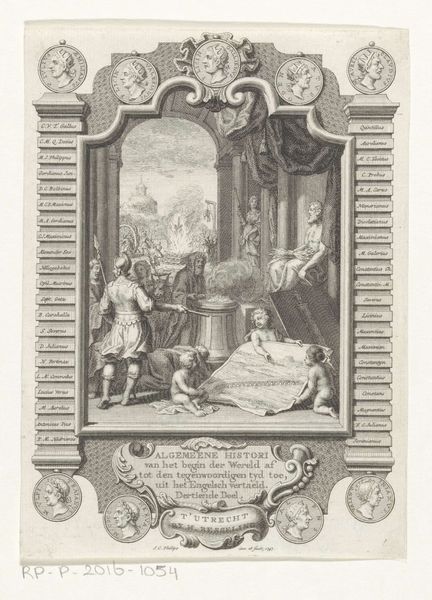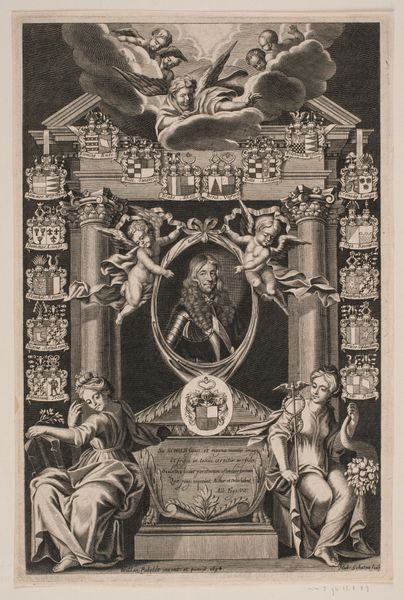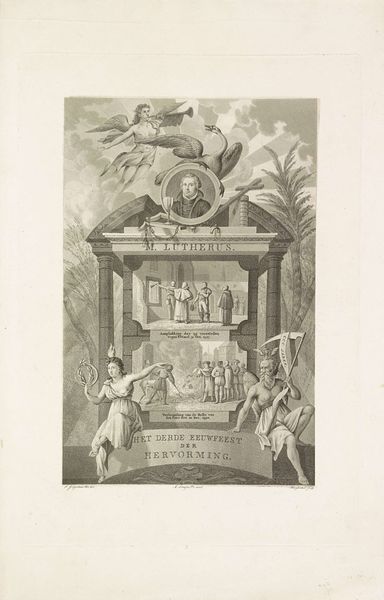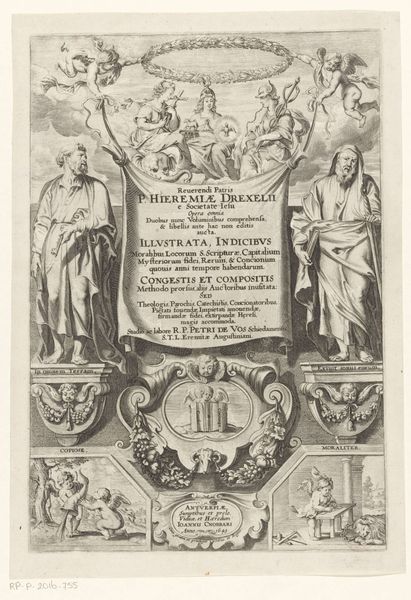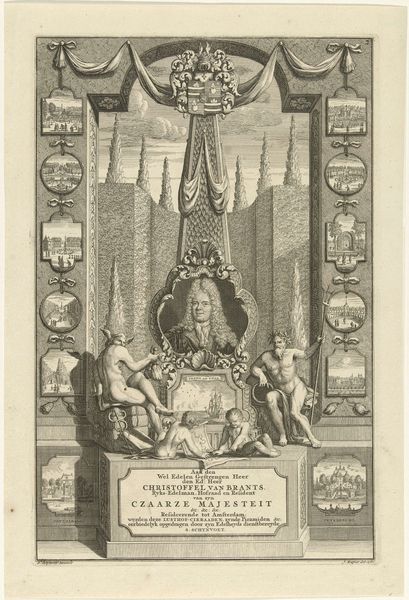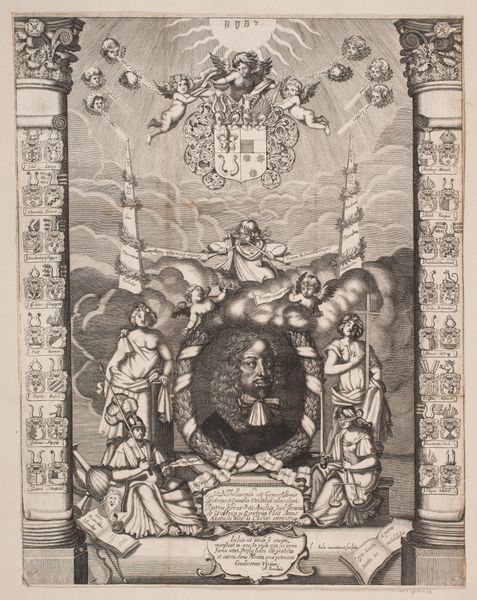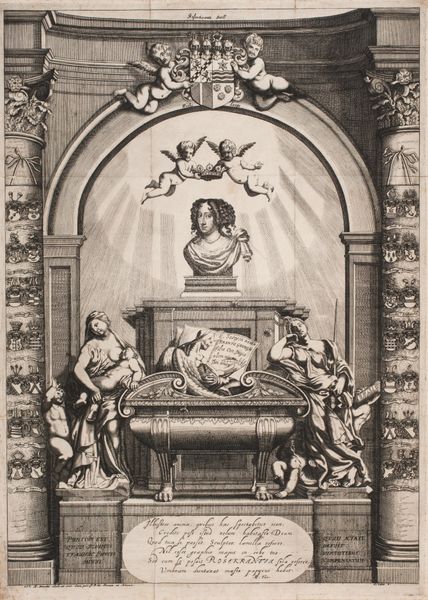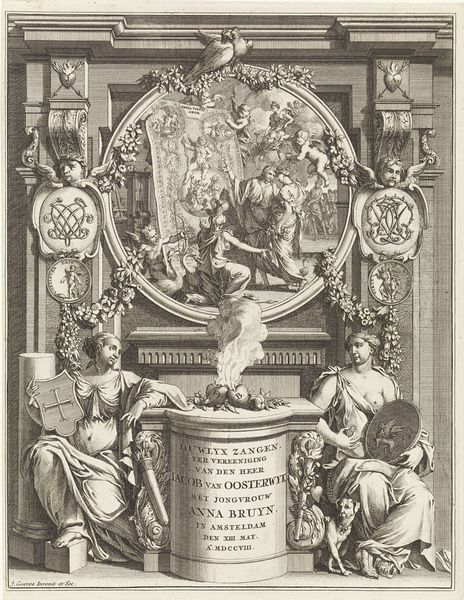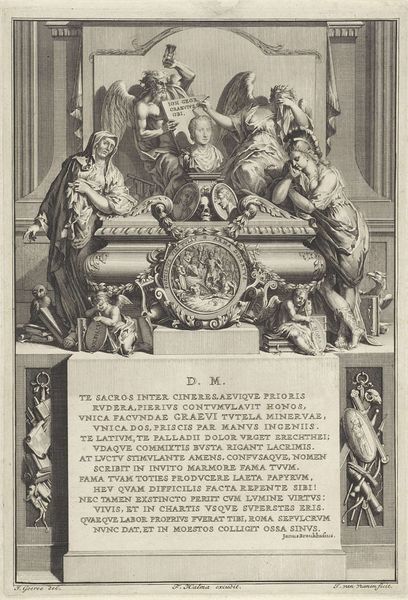
print, engraving
#
portrait
#
allegory
#
baroque
# print
#
history-painting
#
engraving
Dimensions: 524 mm (height) x 410 mm (width) (plademaal)
Curator: Looking at this elaborate print, it almost feels like deciphering a visual poem, doesn’t it? This is "Christence Lykke. Mindeblad," created by Albert Haelwegh sometime between 1667 and 1669. The medium is engraving, a baroque piece residing here at the SMK. Editor: My first impression is, well, a flurry! All these symbolic elements surrounding a stern female portrait – it strikes me as a memorial, almost a baroque tribute, wouldn't you say? I'm really drawn to the incredible detail achieved with this engraving technique, you can really tell they were invested in labor here! Curator: Exactly, it’s a memorial print, a 'Mindeblad', meant to commemorate Christence Lykke. See the allegorical figures framing the portrait? They stand almost as guardians, adding an almost dreamlike and theatrical sensibility to this already detailed work. Editor: Ah, I see now how the material tells a tale! These prints had social meaning beyond their aesthetic value. The amount of work involved clearly signaled status, acting almost like a proto-photograph but encoded with extra layers for the family archive, for the social circle... almost like a luxury commemorative card. Curator: Absolutely, they offer an echo of her world and lineage. But also a deeply intimate glimpse through Haelwegh's perspective as he interprets her role and virtues for future viewers. The angel overhead practically showering the portrait with light emphasizes a moment of grace and apotheosis. Editor: It’s amazing to consider all that production, and what became of them over time! Were these types of portrait engraving always meant for public display? What kinds of tools did Albert Haelwegh's workshop employ in producing engravings of this complexity and with what impact? Curator: Some would be passed around within a family for generations, but others were definitely aimed at wider audiences, functioning as statements of civic virtue, genealogical records, but most essentially they cemented this figure in Denmark's national story. Editor: To really reflect, it's quite amazing to connect a physical artwork so intricately woven with its history, and ponder on our place and perspectives, observing it centuries later. Curator: It invites us to remember, and to contemplate the fleeting nature of lives and legacy—encoded into symbolic form. A delicate dance of darkness and light, of remembrance and elevation.
Comments
No comments
Be the first to comment and join the conversation on the ultimate creative platform.


